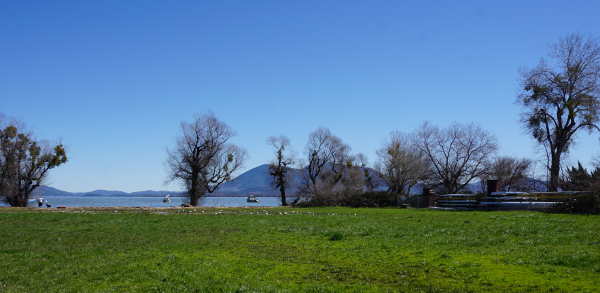- Lake County News reports
- Posted On
Lake ranked as least healthy county in California in new national report
The rankings are available at www.countyhealthrankings.org.
An easy-to-use snapshot that compares counties within states, the rankings show that where you live influences how well and how long you live.
Housing is part of the foundation for living long and well. High housing costs can force some families to live in unsafe or overcrowded housing or even into homelessness.
This year’s Rankings State Reports show stark differences across and within counties in the opportunity to afford a home, especially for those with low incomes and people of color.
This year’s analyses show that a lack of opportunity for a safe, secure, and affordable home is tied to poor health.
The Rankings State Reports call attention to key drivers in health such as severe housing cost burden and its connection to other factors like children in poverty.
Among California’s children living in poverty, 65 percent were living in a household that spends more than half of its income on housing. High housing costs make it difficult for families to afford other essentials that contribute to good health, such as healthy food, medicine, or transportation to work or school.
Looking at differences by place and race offers a more complete picture of health. In California, 21 percent of households spend more than half of their income on housing costs but when we look by race – even deeper differences emerge with households headed by black residents most burdened by severe housing costs at 30 percent compared to white resident households at 17 percent.
County by county, severe housing cost burden ranges from 12 percent to 25 percent of households.
“When housing is unaffordable, it impacts all other social determinants of health—from education to employment,” said Mary A. Pittman, DrPH, president and CEO of the Oakland-based Public Health Institute. “The housing affordability crisis in California is a public health crisis. Moving forward, we must invest in healthy and affordable housing, protect the residents who are most at risk, and ensure that these residents and communities can fully participate in the shaping of housing policy.”
According to the 2019 Rankings, the five healthiest counties in California, starting with the most healthy, are Marin County, followed by San Mateo County, Santa Clara County, Placer County and Orange County.
The five counties in the poorest health, starting with the least healthy, are Lake County, Siskiyou County, Modoc County, Trinity County and Plumas County.
The report used data from the years 2015 to 2017, which saw Lake County hit repeatedly not just by wildland fires but by a flood.
“Our homes are inextricably tied to our health,” said Richard Besser, MD, RWJF president and CEO. “It’s unacceptable that so many individuals and families face barriers to health because of what they have to spend on housing. This leaves them with fewer dollars to keep their families healthy. Imagine the stress and pain that come with unplanned moves. We are all healthier and stronger together when everyone has access to safe and affordable housing, regardless of the color of their skin or how much money they make.”
In addition to the county-level data, the rankings also features What Works for Health, a database of more than 400 evidence-informed strategies to support local changemakers as they take steps toward expanding opportunities.
Each strategy is rated for its evidence of effectiveness and likely impact on health disparities. The Take Action Center also provides valuable guidance for communities who want to move with data to action.
“All communities have the potential to be places where everyone enjoys full and equal opportunity. But the data show that’s not happening in most communities yet. Children of color face a greater likelihood of growing up in poverty, and low-income families struggle to pay rent and get enough to eat,” said Sheri Johnson, PhD, acting director of County Health Rankings & Roadmaps. “It is time to do the difficult work of coming together to undo policies and practices that create barriers to opportunity. The Rankings can help communities ground these important conversations in data, evidence, guidance, and stories about challenges and success.”





































